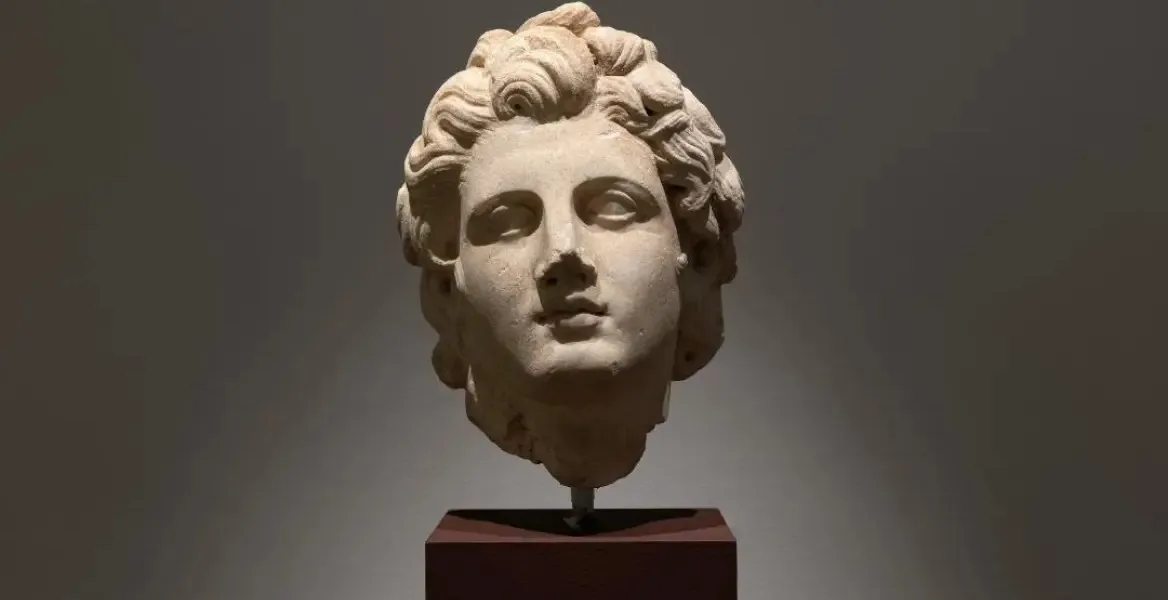Alexander the Great, as well as a vivid representation of the day that marked the transition from the classical to the Hellenistic period, is featured at the impressive exhibition "Chaeronea, August 2, 338 BC: A day that changed the world ", which opens its doors on December 14, at the Museum of Cycladic Art, promising visitors an unprecedented experience.
As pointed out by its curators, Panagiotis P. Iosif and Ioannis D. Fappas, who, as it was announced today, are now also the scientific directors of the museum, the exhibition allows us to "touch" archaeologically, like never before anywhere else in the place and the time, Alexander the Great, this emblematic figure of history about whom we have numerous written sources, but few archaeological finds related to his life. This makes his legend even greater and, therefore, attracts worldwide interest throughout time.
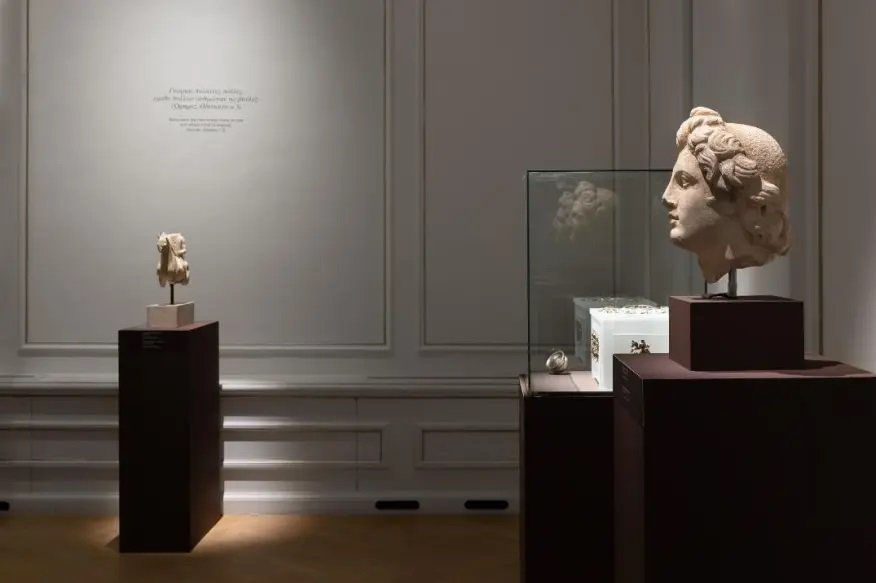

Alexander the Great is therefore revealed in this exhibition through the first military conflict in which he participated, at the age of 18, the Battle of Chaeronea, which was also a historical milestone. August 2, 338 BC, really changed the world as it marked the rule of Philip II's Macedonia over the southern Greeks, the Athenians of Demosthenes and the Thebans. From the very next day, the advance of the Macedonian soldier would begin, the dominance of Greek civilisation and the gradual foundation of the Western world, which marked the transition to the Hellenistic period.
In this highly fierce and fierce battle, the official entry of Alexander the Great into the political and military scene took place, actually contributing, in fact, as the leader of the cavalry, to the great victory of the Macedonians, neutralising most of the elite warriors of the Sacred Company of Thebans who until then were marching undefeated. The remains of his presence there, as well as those who fought alongside him or were killed by him, are unique documents that illuminate his leadership presence like never before.
The precious exhibits
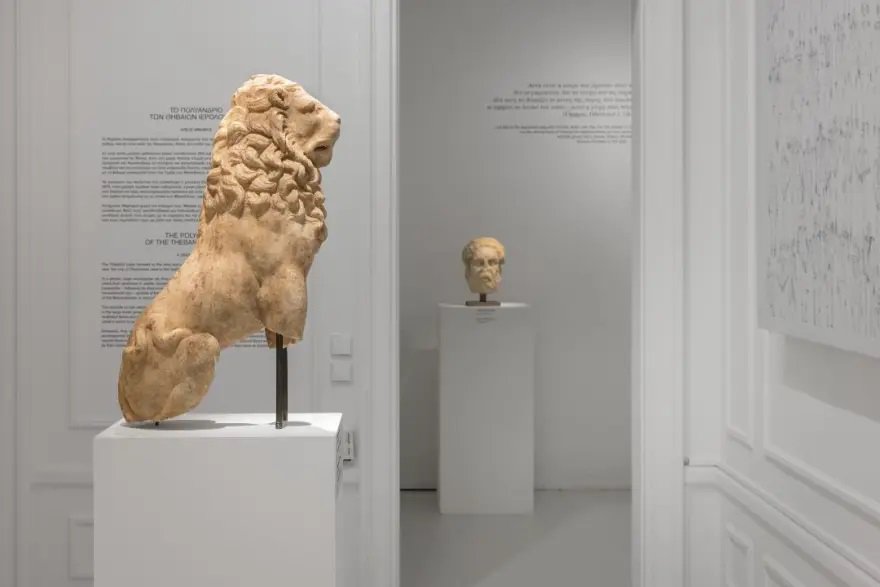
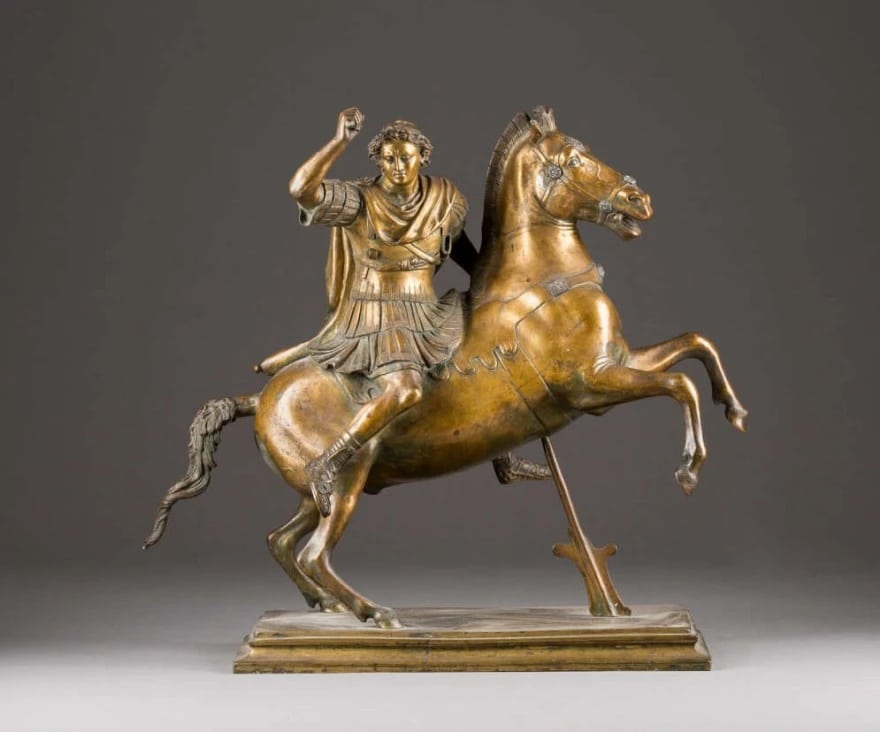
The battle of battles that changed the course of history is revived, in an impressive way, through a total of 240 antiquities and historical documents, a large part of which are presented for the first time and come from 27 Greek museums and institutions, foreign museums and four private collections. Among them stand out the work "Alexander the Great" (1981), created by Andy Warhol after a commission from Alexander Iola, from MOMus - Museum of Contemporary Art, the two marble busts of Philip II and Demosthenes from the Chiaramonti Museum of the Vatican, the unique burial ensemble of the Warrior from Igoumenitsa with the iron breastplate and silver-plated helmet, the Macedonian shield of exceptional aesthetic and historical importance with the inscription of Vasileos Alexander, a product confiscated from illegal excavations, the golden staters of Philip, Alexander and his Successors, the bones of the Hierolochites and the fallen Macedonians, the unique tomb of Tanagra, etc.
In addition, the burial practices of the two armies are presented in the Polyandrium of the 254 Theban Hierarchs with the monument of Leo of Chaeronea and in the Tomb of the Macedonians. At the same time, the recovery of the battle is shown through the great excavation work of the two pioneers of Greek archaeology, at the end of the 19th and the beginning of the 20th century, by Panagiotis Stamatakis and Georgios Sotiriadis.
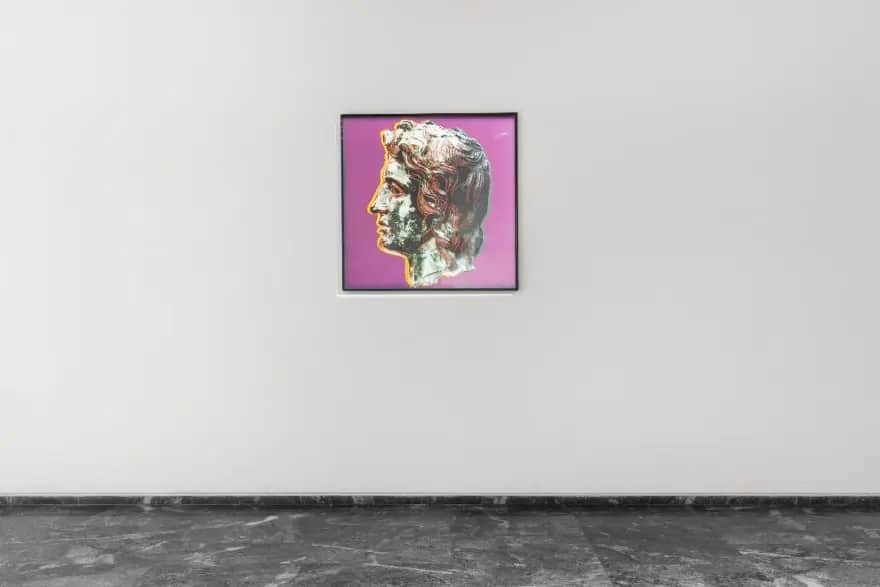
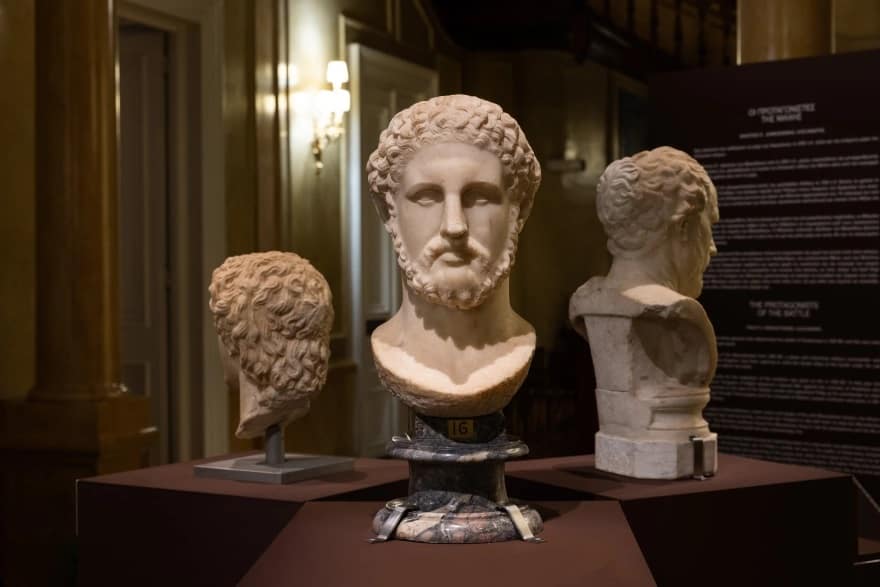
Of particular interest, however, is the innovative approach to the battle with modern means, in the context of which younger visitors can see a diorama of the battle of Chaeronea with hand-made playmobil figures specially made by the collectors Angelos Giakoumatos and Tasos Panazopoulos and watch two films that were created by the company Ubisoft based on the video games Assassin's Creed Odyssey and Assassin's Creed Origins and depict the historical context before and after the battle of Chaeronea.
Reenactment of the battle with Playmobil
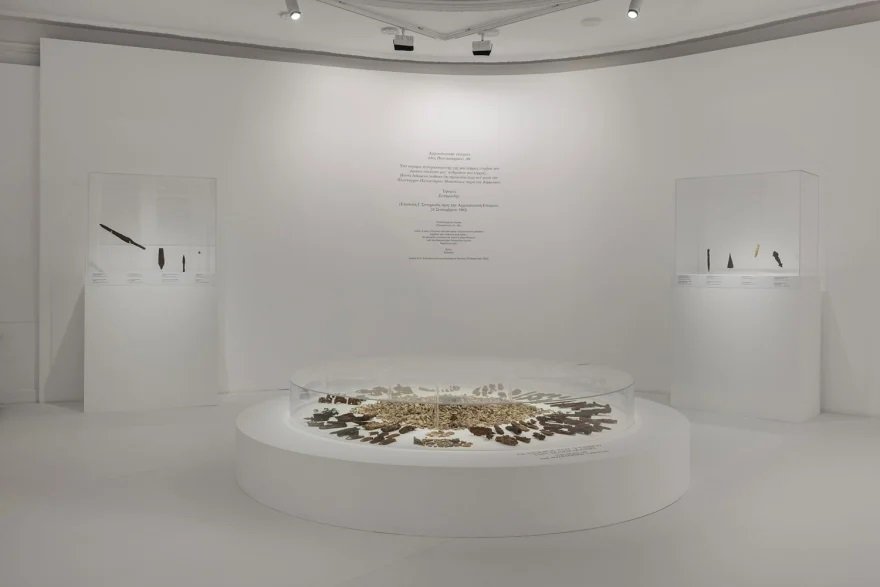
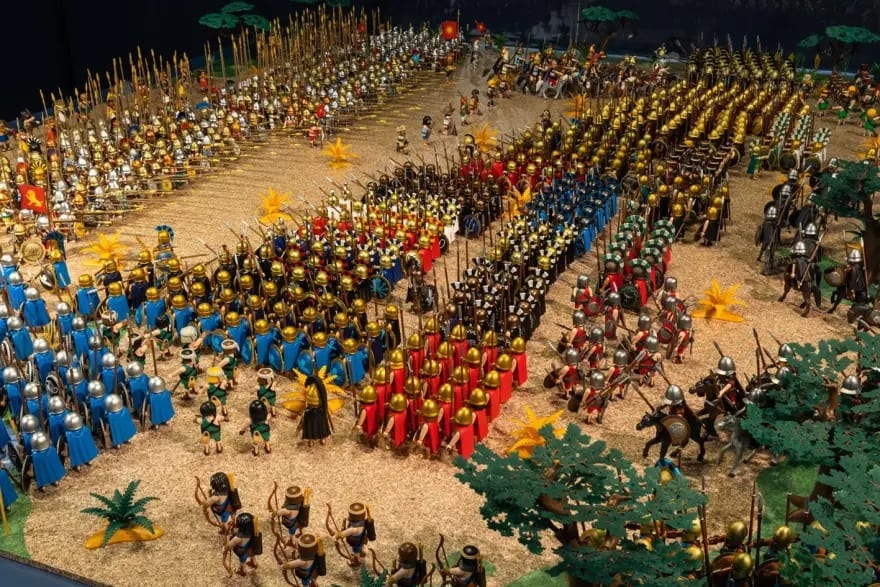
"The exhibition, although it also talks about the battle itself, focuses mainly on its consequences. With this battle, Macedonia was established as a dominant power in Greek affairs, and the way was opened for the birth of the Hellenistic world. The democracy and the city-state passed into a new era, that of the kingdoms, which laid the foundations for creating a world that allowed Greek civilisation to reach the limits of the then-known world. Where unique riches, new knowledge and experiences will be offered to the Greeks and the other peoples who participated in the new reality born after Chaeronea's victory," notes the President and Managing Director of the Museum, Sandra Marinopoulou.
For their part, the two curators of the exhibition underline: "Two decisive factors contributed to the choice of this particular topic: this is one of the few cases in the archaeological chronicles where the descriptions and information about an event from the ancient authors meet the important archaeological remains of the event itself, largely unknown not only to the general public but also to the archaeological community itself.
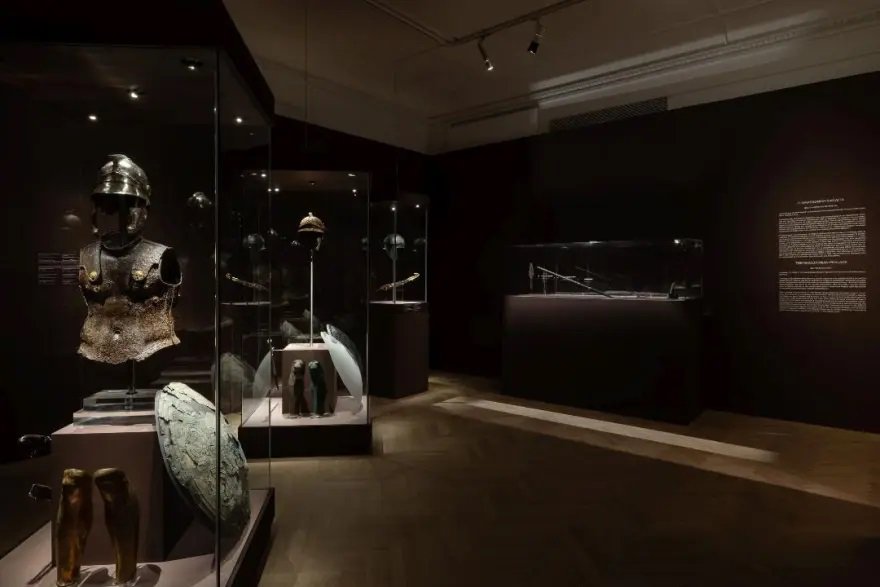
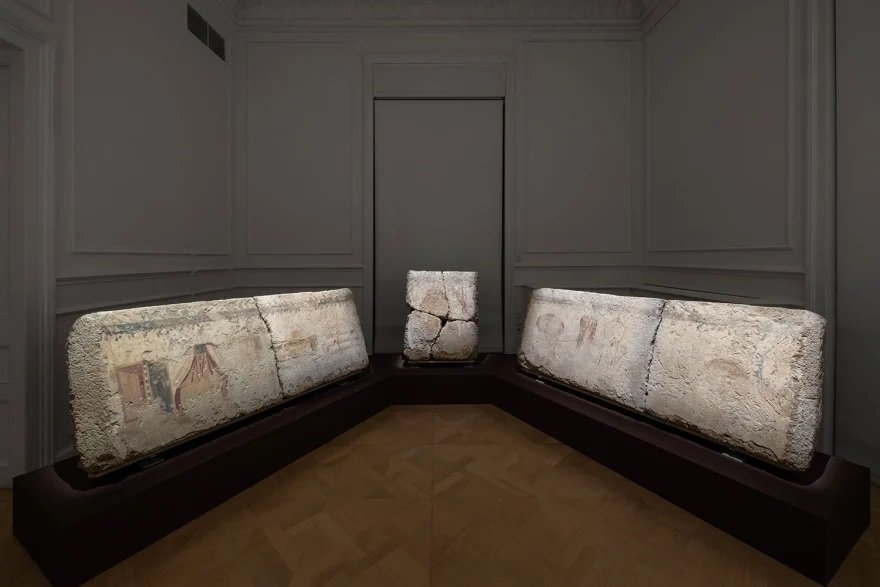
Ark-shaped tomb, necropolis of ancient Tanagra, 3rd c. e.g. Schimatario Museum antiquities warehouse, no. 1957 Photo Paris Tavidian - Cist-shaped tomb, the necropolis of ancient Tanagra, 3rd century BC Schimatari Museum, antiquities storeroom, cat. No. 1957 Photo Paris Tavitian
The second factor is the theme: the main protagonists of the battle were two of the leading figures of Greek antiquity and world history, Philip II and his son Alexander III of Macedonia, whom History called Mega. In the few square kilometres around the field of Chaeronea, these two protagonists meet one of the most important orators of antiquity, the Athenian Demosthenes, writing the fate of the later world […].
Our goal was to give the visitor the experience of a modern approach to an ancient event and examine how it survived in the nation's collective memory."
The exhibition will last until March 31, 2024.

READ MORE: Ancient Egypt’s Amazing Antiquities Revealed in Alexandria the Graeco-Roman Museum.

